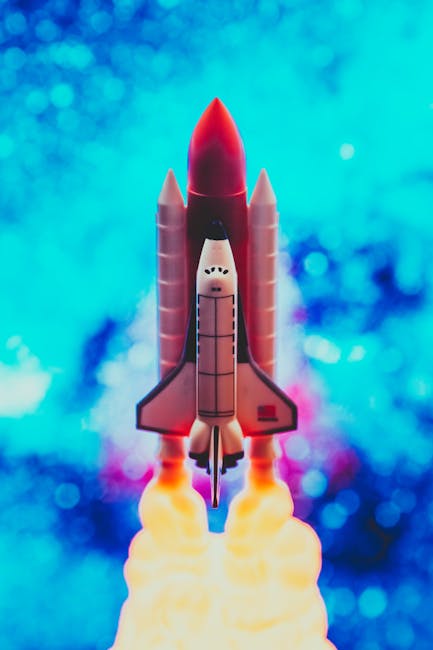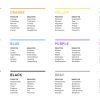
In a world where logos have the power to make us drool over fast food, swoon over luxury cars, and pledge our allegiance to tech giants, it’s clear that the art of logo design is no joke. But what if we told you that behind every iconic logo is a carefully calculated strategy that’s sneakier than a ninja in a room full of bubble wrap? Get ready to dive into the wild world of crafting logos that not only capture attention but also make consumers weak at the knees. It’s time to play the logo game like a boss and watch your engagement levels soar to infinity and beyond.
Understanding the Importance of Logos in Consumer Engagement
Logos play a crucial role in consumer engagement. They are not just random symbols slapped onto products; they are the face of a brand, the superhero cape of marketing! Here are a few reasons why logos are so important:
One of the main reasons logos are essential is because they help create brand recognition. Just like spotting your favorite superhero from afar, consumers can easily identify and connect with a brand through its logo. It’s like a secret handshake that only the cool kids know.
Logos also help to establish credibility and trust with consumers. Imagine going on a blind date with no profile picture – it’s a risky move! A well-designed logo shows that a brand is professional, established, and serious about what they do. It’s like the superhero costume that inspires confidence and trust in consumers.
Additionally, logos can evoke emotions and create a sense of loyalty in consumers. Whether it’s the nostalgia of seeing your favorite childhood brand or the excitement of discovering a new product, logos have the power to tug at heartstrings and create an emotional connection with consumers. It’s like having a personal cheerleader rooting for you every time you see that logo.
Researching Target Audience and Market Trends for Logo Design
When it comes to creating a killer logo, understanding your target audience and staying ahead of market trends is key. It’s like being a logo detective, but instead of solving crimes, you’re solving design challenges!
Before diving into the world of logo design, take some time to really get to know your target audience. Who are they? What do they like? What makes them tick? Is it avocado toast and yoga? Or maybe it’s tacos and Netflix binges? Whatever it is, make sure your logo speaks to them on a personal level.
Next, it’s time to do some sleuthing on market trends. What’s hot right now? Are minimalist logos still in vogue, or is maximalism making a comeback? Stay on top of the latest design trends so your logo doesn’t end up looking like it belongs in a time capsule from the ’90s.
Remember, your logo is the face of your brand, so make sure it’s speaking the right language to your target audience. Researching their preferences and staying up-to-date on market trends will ensure your logo design is on point and gets your brand noticed in a sea of competitors. Go forth, logo detective, and create something spectacular!

colors-fonts-and-styles-to-reflect-brand-identity”>Choosing the Right Colors, Fonts, and Styles to Reflect Brand Identity
When it comes to reflecting your brand identity through colors, fonts, and styles, it’s important to make sure everything is on point. After all, you don’t want your brand to be known for all the wrong reasons – like that one time you accidentally chose Comic Sans as your font. Yikes! So let’s dive into some tips to help you avoid any design disasters and make sure your brand shines bright like a diamond.
First things first, let’s talk about colors. Choosing the right color palette is crucial in conveying the right message to your audience. Think about what emotions you want to evoke – do you want to be bold and confident with red, or calm and soothing with blue? Make sure to pick colors that not only represent your brand personality, but also resonate with your target audience. And remember, less is more – stick to a few key colors to keep things cohesive.
Next up, let’s chat about fonts. Ah, fonts – the unsung heroes of design. They can make or break a brand’s identity, so choose wisely. Opt for fonts that are easy to read, reflect your brand’s personality, and are versatile enough to use across various platforms. And for the love of all things design, please stay away from Comic Sans. Just trust us on this one.
Lastly, let’s talk about styles. Whether it’s minimalist, retro, or whimsical, your brand’s style should be consistent across all touchpoints. From your website to your social media graphics, make sure your design elements all play nice together. And don’t be afraid to mix and match different styles to create a unique look that sets you apart from the competition. Just make sure it still stays true to your brand’s identity. Remember, when in doubt, keep it simple, stylish, and oh-so-sophisticated.

Incorporating Subtle Visual Cues to Evoke Emotions and Associations
When it comes to design, sometimes less is more. Subtle visual cues can pack a punch when it comes to evoking emotions and associations in your audience. Think of it as the design equivalent of a sly wink or a knowing smile. Here are some tips on how to incorporate these sneaky little tricks into your next project:
First off, color is key. Certain colors are known to evoke specific emotions - for example, red can convey passion and energy, while blue can evoke calm and trust. Try incorporating these colors in small doses throughout your design to subtly influence how people feel when they look at it.
Next, consider using imagery that hints at certain associations. A picture of a sunset might evoke feelings of nostalgia or tranquility, while an image of a bustling cityscape could convey excitement and energy. By strategically placing these images in your design, you can subtly nudge your audience towards the emotional response you’re aiming for.
Lastly, don’t underestimate the power of typography. The style of font you choose can have a big impact on how your message is received. Bold, expressive fonts might convey confidence and strength, while more delicate, ornate fonts could evoke a sense of elegance or sophistication. Experiment with different typefaces to see which ones best complement the emotions and associations you’re trying to convey.

Testing Logo Designs for Effectiveness and Impact on Consumer Perception
When it comes to logo designs, it’s important to ensure they have the desired impact on consumer perception. One way to test this is by conducting focus groups or surveys to gather feedback on the different designs. This can help identify which logos resonate most with consumers and have the greatest potential for success.
Another way to test logo designs is by conducting A/B testing, where two different designs are presented to consumers to see which one performs better. This can provide valuable insights into what elements of a logo are most appealing to consumers and can help inform future design decisions.
It’s also important to consider how different logo designs will be perceived in different contexts. For example, a logo that looks great on a website may not translate as well to a physical product or signage. Testing logo designs in various contexts can help ensure they maintain their effectiveness and impact across different mediums.
Ultimately, the goal is to create a logo that not only looks great but also resonates with consumers and helps build brand recognition. By , businesses can ensure they are making the right impression and standing out in a crowded marketplace.
FAQs
How can a well-designed logo enhance consumer engagement?
Well, think of your logo as the charming face of your brand. Just like a good-looking face can attract more attention, a well-designed logo can grab consumers’ interest and make them want to learn more about your products or services.
What elements should you consider when crafting a logo to enhance consumer engagement?
Oh dear reader, there are so many elements to consider! From colors and fonts to shapes and symbolism, every little detail in your logo can communicate a message to your target audience. So, choose wisely!
Can a logo really make a difference in consumer loyalty?
Absolutely! A logo is like the superhero cape of your brand. A strong, memorable logo can build trust, create emotional connections, and keep consumers coming back for more. So, don’t underestimate the power of a well-crafted logo!
What are some examples of successful logos that have significantly boosted consumer engagement?
Oh, there are so many iconic logos out there! From the golden arches of McDonald’s to the swoosh of Nike, these logos have become ingrained in our minds and hearts. So, take inspiration from these legends and create a logo that will stand the test of time!
Thanks for Logo-ing in with Us!
We hope this article has opened your eyes to the exciting world of logo design and consumer engagement. Remember, a logo is more than just a pretty picture – it’s a powerful tool that can help your brand stand out in a crowded marketplace. So go forth, dear reader, and craft your logo with care and creativity. Your consumers will thank you for it – and so will your bottom line! Happy logo-ing!












